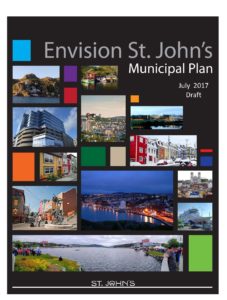
”A great work of architecture will speak to us of a degree of serenity, strength, poise and grace to which we, both as creators and audiences, typically cannot do justice – and it will for this very reason beguile and move us. Architecture excites our respect to the extent that it surpasses us.”
Alain de Botton; The Architecture of Happiness
Setting down rules for urban architecture could be akin to walking through a minefield. Beautiful cities – Paris, Rome, Edinburgh, San Francisco, Bath, Sienna, Sydney, New York – all have completely different reasons for their attractiveness. Some defer to order and regularity, others rely on their antiquity, and others delight in their eclecticism. Many of us know what we like and what we don’t like. Many simply don’t care or do not stop to consider. However, most everyone enjoys cities that are vibrant, although this appeal is even more difficult to assess – influenced by climate, social maturity and the economy.
In recent years sustainability has also been added to the mix. Cities and buildings that are “green” somehow have had their attractiveness elevated, although whether this can be construed as an aesthetic parameter is subject to debate.
In St. John’s, the measure of a good building has long been steeped in scale and context, but these architectural discussions are almost totally relegated to the downtown. It’s rare when a fine building in an industrial park garners accolades. Perhaps we view the downtown as deserving and demanding of elegant structures. It is after all, the only part of the city that makes St. John’s truly unique. The simplistic view is that if we restrict all the buildings to a maximum of four stories and adorn them with late nineteenth century bric-a-brac we won’t upset the delicate balance that is the “urban fabric”. This has traditionally pitted preservationist factions against developers.
But the position of the anti-demolition / heritage bloc, quite rightly, stems from fear: the fear that the demolition of historic buildings will result in the erection of buildings with little or no architectural or social merit. Many high-rise structures in the City are a testament to this, although there are a multitude of (modernist) low-rise examples as well.
The City demands all manner of costly study to examine viewplanes, traffic, parking, wind, snow, acoustics, sun-shadowing, landscaping, sewers and garbage removal. And it has routinely forced developers to spend vast sums of additional monies to address what they see as deficiencies in these areas, but the City has no policy on what a building should aspire to be (in St. John’s).
Aesthetic is left to the designer. However, the people of St. John’s have a great deal to say about ugly buildings. The topic would probably rank as a higher priority than parking if they thought there was any point in pursuing an argument that was not quantifiable.
The renowned building scientist Joseph Lstiburek has argued that ugly buildings are not sustainable. His rationale is loosely based on the idea that such buildings instill no pride, and therefore there is little or no impetus on the part of owners to maintain them beyond a minimum standard predicated by law or tenant potential.
The promise of a beautiful building however, would counter the fears of demolition. Such constructions would also foster sustained upkeep and fastidious maintenance. A building that “beguiles” or “moves” us would not be such a difficult sell in an historic neighbourhood, nor would it fall into disrepair.
Given that the City does not have any person or personnel with the professional qualifications to weigh in on what should be a minimum aesthetic for new construction, the municipal plan should at least promote good buildings and good building practices. As pointed out in an earlier post on the topic of McMonster Homes, the draft Municipal Plan for St. John’s mentions “urban design” 17 times. It is touted in the “Envision” document as the means to “improve the quality of life … throughout the City”. The draft document further suggests that “quality” urban design can be assured through the development of “comprehensive urban design guidelines for new development”.
The “Envision” document has been in draft form now for almost a year. It’s time for Council to get on with it, and in particular, it’s time to come to grips with whatever “comprehensive quality urban design guidelines” are.

Perhaps a building’s finish materials should be subject to quality design rules. We know for example that EFIS (synthetic stucco applied over rigid insulation) performs poorly in our climate and requires regular maintenance. Why then would we permit it on any building? We know that curtainwall glass is not a desirable St. John’s solution, invoking the (oft-used) glass box criticism. Should we not therefore strive to strike balance in its employment on a façade?
Although these examples suggest detailed analysis inappropriate at the municipal plan level, the ground rules need to be examined. For example, good buildings should not be void of cultural or historical references. They should not consist of cookie cutter repetitive modules, but should suggest a rational, balanced composition. Any layperson can spot cheap in a field of elegance or quality. Such a characteristic is no more difficult to perceive than a building that has been designed to house cars as a priority over people.
If St. John’s is as truly unique as we tout it to be, how then can our municipal plan be silent on the issue of architecture? It is the only document that sets the parameters for building regulation. Without its direction, we will simply envelope ourselves in urban mediocrity?
